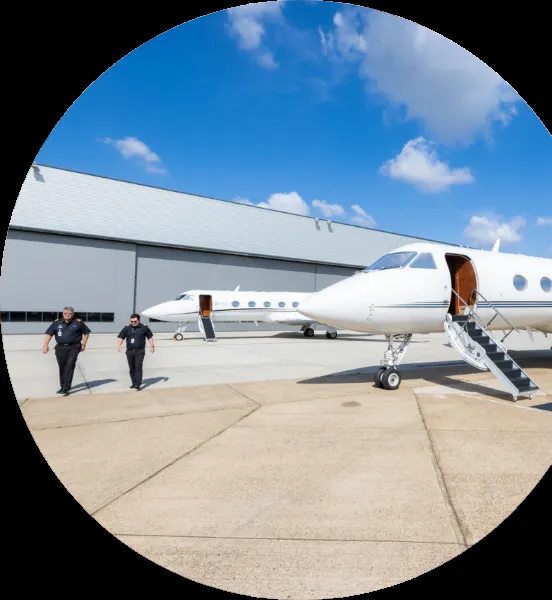Traveling by Private Jet With Your Dog: Your Ultimate Guide
If you’re like many pet owners, the idea of traveling long distances or internationally with your furry friend by your side is appealing. However, the logistics of flying commercial with a dog can be stressful and restrictive. This is where private jet travel with your dog comes in—it provides a relaxed, hassle-free way to fly with Fluffy that feels like a luxury vacation for everyone involved. However, there are some important things to know before jetting off to your destination.
Is It Allowed?
The first question many ask is whether private jet operators even allow pets onboard. The good news is the vast majority do permit dogs as long as certain requirements are met. From my experience working in private aviation, most operators are very pet-friendly as they recognize the emotional value pets hold for their clients. However, it’s always best to check individual company policies in advance.
Size & Behavior Requirements
While private jet access is more flexible than commercial airlines, there are still typical size and behavior standards dogs must meet. Most operators have weight limits, usually around 20 pounds or less. Some even have small size restrictions of 10 pounds or under. Your pup will also need to be crate trained and able to remain calm during takeoff, landing, and time onboard. Always get confirmation of any rules before booking to avoid issues.
Vaccinations & Health Records
Importantly, all dogs must be up-to-date on routine vaccinations. This means they should have received rabies, distemper/parvo, and Bordetella (“kennel cough”) vaccines. Proof from your vet in the form of an official health certificate may be requested, typically valid for 30 days. Some international destinations also require a rabies titer test or additional paperwork like a microchip ID. So be prepared to provide all relevant health documents in advance.

Crate Training is Key
For a relaxing flight, crate training your dog is highly recommended, if not required by the operator. The confined space of a private jet cabin paired with engine noise can unnerve unfamiliar pups. Having a cozy, portable kennel will help your dog feel secure. Introduce positive crate associations well before travel through treats, toys or bedding left inside. Test run short periods in the crate at home over multiple days before the big flight.
Prepare for Takeoff & Landing
Two phases that often stress dogs the most are takeoff and landing due to changes in air pressure and noise levels. My advice is to give your pup calming aids like meloxicam 30 minutes before these times to help reduce anxiety. You could also try calming treats, pheromone diffusers/sprays or even light massage/petting on the kennel. Having a favorite toy or chew also provides distraction. The goal is keeping your dog as comfortable as possible during these smoother points.
Consider Sedation If Needed
In severe anxiety cases, talk to your vet about possible light sedation options that will not compromise safety. Sedation is typically a last resort and should only be done under professional guidance. The risks have to be carefully weighed against the potential benefits. Some dogs simply cannot tolerate travel without it, so this may be an option worth exploring in certain circumstances with close veterinary oversight.
Prepare Travel Supplies
Have all essential travel items ready ahead of time including leash/collar, proper ID tags, food/water bowls, favorite blanket or bed, plenty of poop bags and any medications. If flying internationally, bring a supply of your dog’s regular food and contact information for a local vet at your destination in case of emergency. It’s also smart to pack a pet first aid kit with basics. Come prepared with all gear readily accessible for TSA inspection if needed.

Practice Patience During Boarding
At the airport, dogs must typically remain crate-trained until cleared by staff to board. To avoid stress, get there extra early and be prepared to calmly wait your turn in a holding area before loading. Bring toys or treats to occupy your pup during this time. Go through a practice “airport routine” beforehand so they understand what to expect. Have all paperwork organized ahead of time for a speedy check-in.
Stay with Your Pup Throughout the Flight
Most importantly, do not check your dog as cargo on any flight. They should remain by your side in the cabin at all times for proper supervision. Private jet operators understand the importance of this. If flying internationally, make sure your pup is allowed entry to your destination country before travel. Also consider any quarantine requirements upon return. With the right preparation using these best practices, you and your four-legged companion can take to the skies worry-free and make wonderful travel memories together.
Cost Is Higher but Worth It
Of course, the biggest hurdle for many is the considerably higher cost that comes with chartering a private jet versus flying commercial. However, as any dog parent knows, our furry family members are priceless! When you factor in fewer travel hassles, reduced stress on dogs, greater schedule flexibility and the ability to bring your pet, private air travel basically ends up paying for itself in my view. So if you have the means, it’s kind of a no-brainer to fly private with your pup.
In conclusion, taking your dog jet-setting by private plane makes an amazing experience for you both and provides only positives if certain regulations are followed. Let me know if you need any other tips for transporting your four-legged best friend safely! Safe travels to you and your pup. Bon voyage!

Factors to Consider When Traveling by Private Jet with Your Dog
| Factor | Details |
|---|---|
| Size of Dog | Larger dogs may require more space. Consider a jet with extra legroom. |
| Temperament | Calm dogs will have an easier time than fearful or excitable dogs. |
| Training | Well-trained dogs are less likely to be stressed or disruptive during the flight. |
| Health | Consult your vet if your dog has any medical issues that could be exacerbated by air travel. |
| Flight Duration | Long flights may be harder on dogs. Consider breaks to walk, play, and relieve yourself. |
| Travel Crate | An adequetly sized, familiar travel crate provides security and containment as needed. |
| Pet Amenities | Look for pet-friendly aircrafts that allow space for food, water, toys to keep your dog comfortable. |
FAQ
-
Can I bring my dog on a private jet?
Basically yes, you can bring your dog with you on a private jet. However, different airlines have various rules about what size and breed of dog is allowed. It’s best to check with the airline before your flight. Most let you bring small dogs but larger ones may need to be in a carrier under the seat. At the same time, you’ll need paperwork proving your pup is healthy and up-to-date on shots.
-
How will my dog behave on a private jet?
Your doggo’s behavior on the plane will depend a lot on their personality. Some pups are chill and just nap the whole time. Others may kind of freak out at first from the noise and movement. It helps if you bring your pup’s favorite toy or blanket to keep them comfortable. You may also want to ask your vet about calming aids, although my friend’s French bulldog seemed totally fine without anything. Mostly it’s about lots of positive reinforcement and treats when they’re being calm.
-
Is it expensive to bring a dog on a private jet?
Taking your pooch private can definitely cost more greenbacks than flying commercial. Most charter companies charge extra fees for animals that can be hundreds or even thousands of dollars depending how big Fido is. However, some operations offer “paw passes” that bundle the pup payment with your tickets. So in a way, the dog donation is similar to baggage fees on a normal plane. It’s still cheaper than buying another seat! At the same time, you avoid the stress of flying your fur baby cargo hold.
-
What paperwork is required for an international jet trip with a dog?
If you’re jet-setting across borders with your hound, you’ll need more than shots. Each country has its own rules about pets. Basically you must get an import permit from the destination, a health certificate from your vet within 10 days of flying, and maybe a rabies titer test. It’s best to research regulations months before your trip. Don’t leave the paperwork to the last minute or else you may have to reschedule some amazing vacation spots. On the other hand, putting in a little preparation will let you and your pooch relax and enjoy your travels stress free!

-
Will my jet provider accommodate special needs for a service or support dog?
If Rover is a trained assistance pup, most charter companies should supposedly accommodate any needs. For example, a few have specific policies about allowing service dogs in the cabin regardless of size limits. Jet operators are bound by laws protecting disabled travelers’ rights to bring medical dogs. However, it can’t hurt to ask ahead of time what special provisions they offer – like extra legroom near your seat. Bring documentation that proves your pet’s role too. With a little communication, many outfits aim to make all passengers’ flights as comfortable as possible.
-
Is it safe to give my dog medication before a jet trip?
Maybe ask your vet before dosing up your doggo with anti-anxiety meds. As an expertpointed out, while calming aids can help some panicked pups, they may also make others feel bizarre or even goopy on rare occasions. It’s better to try relaxation techniques without pharmaceuticals first if your hound seems the nervous type. Obviously listen to your vet’s personalized guidance, but anxiety medication should be an absolute last resort. Is it worth the risk to their health for the flight? It appears calm socialization and treats usually do the trick. However, a medical pro can advise the safest strategy based on your dog’s unique needs.
-
How can I prepare my dog for a jet experience?
To ease your pooch into private plane travel, do some test runs of the basics before the big day. Stuff kongs and puzzle feeders with yummy treats on short practice rides around town to build positive associations. It also helps expose them gradually to take-off and landing noises through youtube clips. Don’t forget a fun training session as a reward after each short mock flight! Most experts agree slow desensitization over several weeks leads to less stress down the runway. Your pup will be so stoked for treats, they won’t realize they’re jetting off on an adventure until it’s over.
